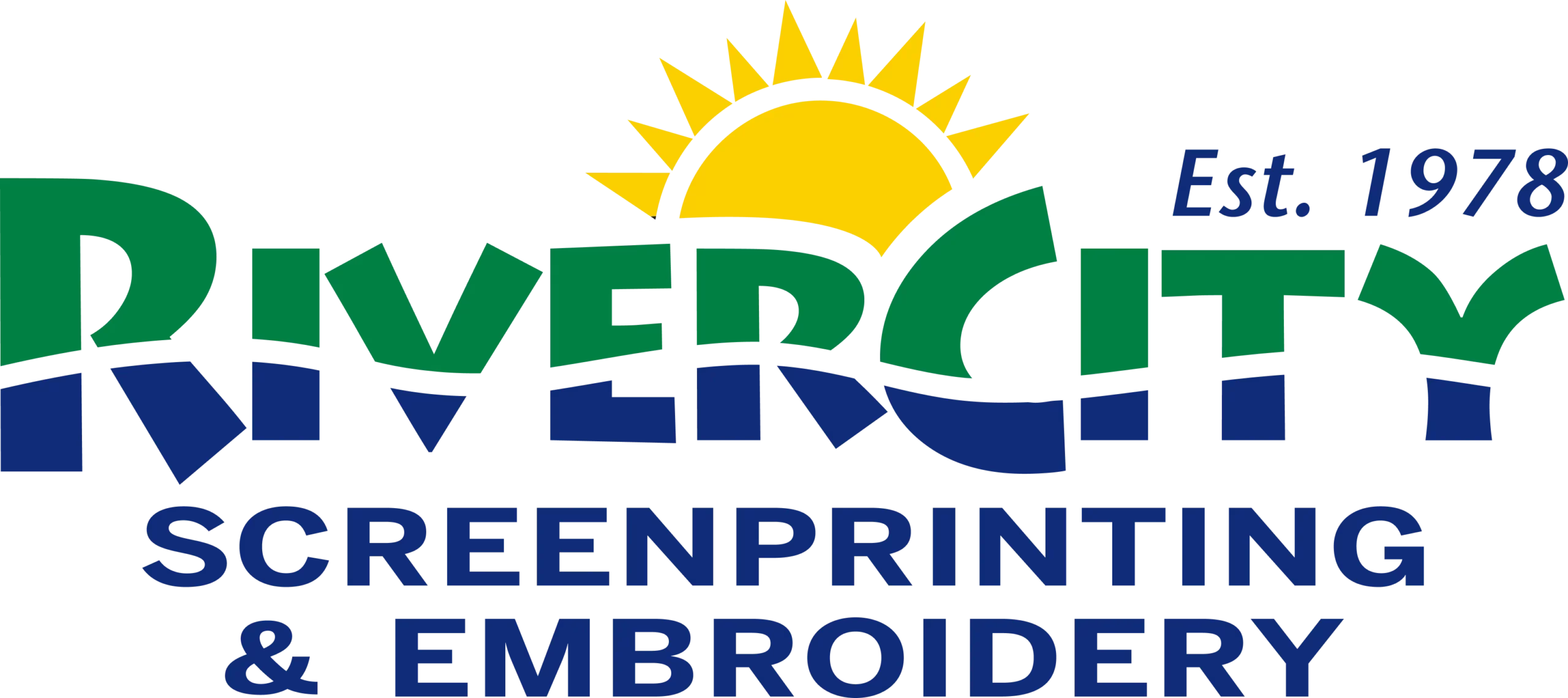Before we dive into the comparison, it’s essential to understand the key terms. Traditional screen printing, often referred to as silk screen printing, involves the utilization of a stencil (screen) to apply ink onto various substrates, including fabric, paper, or plastic.
This age-old technique has a rich history, with its roots tracing back to ancient stenciling methods.
Traditional screen printing boasts a remarkable history, with its origins dating back to ancient China. In those times, stencils were employed to transfer intricate designs onto fabric, marking the birth of this craft.
Over the centuries, this printing method spread across different parts of the world, eventually gaining widespread recognition. By the 20th century, it had evolved into both an artistic and commercial medium.
With this context in mind, let’s do a more detailed exploration of traditional screen printing and digital.
Traditional Screen Printing
The traditional screen-printing process is known for its meticulous approach, where each step contributes to the creation of remarkable prints. The process begins with the creation of a stencil on a mesh screen, which is typically made of materials like polyester or nylon. The stencil serves as the defining element for the design to be printed.
Once the stencil is ready, it’s placed on the material to be printed. Then, ink is expertly applied over it. A squeegee is used to expertly press the ink through the stencil, thereby transferring the intended design onto the material. To ensure the print’s durability and permanence, the ink on the material is dried and cured using either heat or ultraviolet (UV) light.
Traditional screen printing offers an array of advantages, making it the preferred choice for many applications. Renowned for its exceptional quality, traditional screen printing ensures that every print is a work of art.
This technique excels in capturing vivid and precise colors, making it an ideal choice for designs that require high impact. Traditional screen prints are known for their impressive durability, ensuring that they remain vibrant and long-lasting.
An often-underrated aspect, traditional screen prints offer a tactile quality. The ink layers give depth and texture to the design, resulting in a unique look and feel.
It’s important to note that while traditional screen printing offers unmatched quality, it does come with some trade-offs. The setup costs can be relatively higher, and the labor-intensive nature of the process means that longer preparation times are often required for each print run.
Digital Screen Printing
Now, let’s move on to explore the digital screen-printing process, a more contemporary and technologically advanced method.
The digital screen-printing process begins with the creation of a design using graphic software. This design is then loaded into a computer-controlled inkjet printer. Once the design is in the system, the printer expertly applies the ink directly onto the chosen material. It’s an efficient process that closely replicates the digital design.
As with traditional screen printing, the print must be cured for durability. Heat or ultraviolet (UV) light is typically used to set the ink, ensuring it remains vibrant and lasting.
Digital screen printing has distinct advantages that make it the preferred choice for specific applications. Digital screen printing is often more budget-friendly for smaller print runs or designs with multiple colors. The texture of digital screen prints is generally smoother, offering a sleek and modern appearance. However, it’s essential to acknowledge its limitations. It may not achieve the same tactile texture as traditional screen prints, and its durability may be lower when compared to the latter.
Comparison
To better understand these two screen printing techniques, it’s crucial to weigh their advantages and disadvantages.
Advantages and Disadvantages of Traditional Screen Printing
Traditional screen printing has its strengths and limitations, making it suitable for certain applications.
Advantages:
This method excels when it comes to producing high-impact, colorful designs. Traditional screen prints are known for their exceptional durability, making them ideal for long-lasting applications. They provide a tactile texture and depth to prints, adding a unique dimension to the design.
Disadvantages:
The setup costs and labor-intensive process can translate into higher expenses for each print run. The longer preparation times needed for traditional screen printing might not be suitable for projects requiring quicker turnarounds.
Advantages and Disadvantages of Digital Screen Printing
Digital screen printing offers its own set of advantages and disadvantages.
Advantages:
This method excels in replicating intricate, high-resolution designs with precision. Also it’s cost-effective for shorter print runs and designs with multiple colors. Digital screen prints often offer a sleek, modern appearance, ideal for contemporary and customized designs.
Disadvantages:
While digital screen printing offers a smooth texture, it may not provide the same tactile quality as traditional screen print and lower durability compared to traditional screen printing.
The Art of Choice
As you stand at the crossroads of traditional and digital screen printing techniques, remember that the beauty of art lies in choice. Both methods have their strengths and unique characteristics, making them valuable assets for different scenarios.
Traditional screen printing, with its rich history, excels in creating tactile, vibrant, and durable prints—perfect for merchandise, posters, and fine art.
On the other hand, digital screen printing, a product of modern technology, offers intricacy, cost-effectiveness, and a sleek, contemporary feel—ideal for customized designs and shorter print runs.
Understanding the unique advantages and disadvantages of each technique empowers you to make informed decisions.
Your choice should align with the project’s specific needs, your budget, and the desired outcome. By embracing the art of choice, you ensure that your project unfolds as a masterpiece, precisely as envisioned.
San Marcos Screenprinting and Embroidery For Your Business
We pride ourselves on staying at the forefront of industry trends and technologies to provide our clients with top-quality San Marcos custom t-shirts for any occasion.
Whether you’re looking to elevate your brand with customized apparel or need screenprinted shirts in San Marcos for a special event, our team is here to bring your vision to life. Contact us today to discuss your next project and let us turn your ideas into reality!

